Mother Nature had been extremely kind to us on this trip. Nothing but sunshine and lots of it… Until we reached the Seychelles, that is. The Republic of 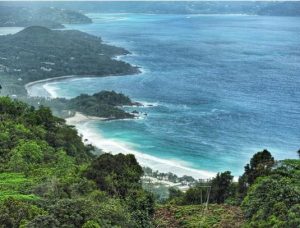 the Seychelles is an archipelago of 115 islands situated in the Indian Ocean just off the coast of east Africa. With a territory of 177 square miles and a population of 92,000 it is the smallest African country. It boasts numerous beautiful beaches, coral reefs, and nature reserves, as well as rare animals. Mahé, is also home to Victoria, the capital (pictured: Mahé Island, sans rain).
the Seychelles is an archipelago of 115 islands situated in the Indian Ocean just off the coast of east Africa. With a territory of 177 square miles and a population of 92,000 it is the smallest African country. It boasts numerous beautiful beaches, coral reefs, and nature reserves, as well as rare animals. Mahé, is also home to Victoria, the capital (pictured: Mahé Island, sans rain).
We were scheduled to dock at La Digue, but rough seas and high winds prevented this… So, the ship continued on to Praslin, where almost all shore excursions were cancelled because of heavy rain. The following day, the ship moved on to Mahé… and still more rain. In other words, the Seychelles were rained out. Evidently, Mother Nature has her own mysterious ways!
Zanzibar, Tanzania: Zanzibar is an insular, semi-autonomous region, which united with Tanganyika in 1964 to form the United Republic of Tanzania. It is an archipelago in the Indian Ocean, 16-31 miles off the coast of the African mainland, consisting of many small islands and two large ones: Unguja (the main island, referred to informally as Zanzibar); and Pemba Island. The capital is Zanzibar City located on the island of Unguja. Its historic center Stone Town is a World Heritage Site.
Stone Town, Zanzibar, Tanzania: Situated on a promontory that juts out into the Indian Ocean from the western side of Unguja Island, Stone Town 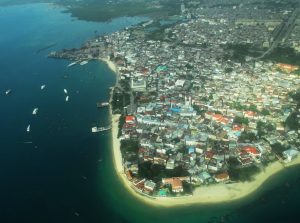 of Zanzibar is supposedly the typical example of a Swahili trading town. Evidently it was the type of community that first developed on the east coast of Africa, expanded under Arab, Indian, and European influences, yet still managed to retain the indigenous elements that were unique to this particular region (pictured: Stone Town aerial view).
of Zanzibar is supposedly the typical example of a Swahili trading town. Evidently it was the type of community that first developed on the east coast of Africa, expanded under Arab, Indian, and European influences, yet still managed to retain the indigenous elements that were unique to this particular region (pictured: Stone Town aerial view).
The buildings of Stone Town clearly reflect these unique elements, which have brought together and homogenized disparate cultures of Africa, the Arab region, India, and Europe. The major buildings date from the 18th and 19 centuries and are principally constructed of ragstone and mangrove timber, set in a thick lime mortar and then plastered and lime-washed. These two-story structures with long narrow rooms tend to be arranged around an open courtyard that is reached through a narrow corridor. Externally, houses are distinguished by elaborately carved double “Zanzibar” doors, others by wide verandahs and/or richly decorated interiors. Other buildings include simple ground floor Swahili houses and narrow façade Indian shops along so-called “bazaar” streets constructed around a commercial space.
Our excursion began with Stone Town’s oldest monument, the Old Fort, also known as the Arab Fort. Built by the Omani Arabs after expelling the 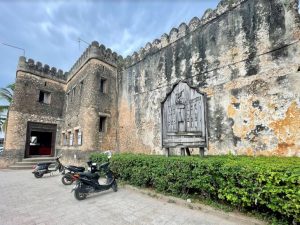 Portuguese in 1699, it was subsequently used as a garrison and prison in the 19th century, and as a terminal of the Zanzibar railways from 1905 – 1928. A new guardhouse was built in 1947 and used as the ladies’ club; and an amphitheater was added in the 1990s. It is now the headquarters of the Zanzibar International Film Festival.
Portuguese in 1699, it was subsequently used as a garrison and prison in the 19th century, and as a terminal of the Zanzibar railways from 1905 – 1928. A new guardhouse was built in 1947 and used as the ladies’ club; and an amphitheater was added in the 1990s. It is now the headquarters of the Zanzibar International Film Festival.
The fort is essentially a square of imposing stone walls that protect an inner courtyard, which houses the remains of a Portuguese church, the site upon which the fort was constructed. The fort is located on the main seafront, adjacent to another landmark building, the House of Wonders, the former palace of the Sultan of Zanzibar.
Of infinitely more interest is the Anglican Cathedral of Christ Church. This landmark historic church 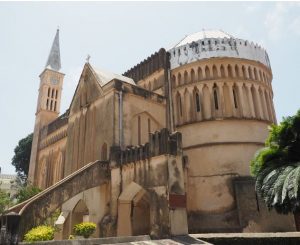 belongs to the Anglican Church of Tanzania and is one of the most prominent examples of early Christian architecture in East Africa. Built in seven years, based upon the vision of Edward Steere, third Anglican bishop of Zanzibar, who actively contributed to its design, it opened its doors on Christmas 1879. Occupying a large space in the center of the old town where the largest slave market had been located, the cathedral was actually constructed to celebrate the end of slavery.
belongs to the Anglican Church of Tanzania and is one of the most prominent examples of early Christian architecture in East Africa. Built in seven years, based upon the vision of Edward Steere, third Anglican bishop of Zanzibar, who actively contributed to its design, it opened its doors on Christmas 1879. Occupying a large space in the center of the old town where the largest slave market had been located, the cathedral was actually constructed to celebrate the end of slavery.
The altar was placed in the exact position where the main “whipping post” of the market had been located. And, 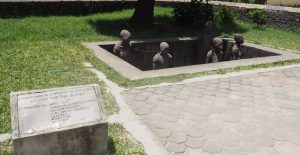 in the adjoining square, there is a monument to the former slaves – several human figures in chains emerging from a pit – as well as a museum on slavery.
in the adjoining square, there is a monument to the former slaves – several human figures in chains emerging from a pit – as well as a museum on slavery.
Edward Steere died before the cathedral was completed and was buried behind the altar. Inside the church there is a cross that was made of wood from the tree that grows in the place were David Livingstone’s heart was buried in Chitambo, Zambia, Africa (David Livingstone was a Scottish physician, Christian missionary, and avowed abolitionist; his remains are buried in Westminster Abbey).
For rock fans, Stone Town also has significant meaning, as it is the birthplace of Freddie Mercury, the lead vocalist and pianist of the rock band Queen. It is 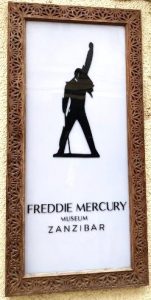 also home to the Freddie Mercury Museum, which pays tribute to its native son and is located in the very house where Mercury and his family resided until they moved to England in 1963. Born Farrokh Bulsara in 1946 to Parsi-Indian parents, he is regarded as one of the greatest singers in the history of rock music, known for his flamboyant stage presence and four-octave vocal range. Having studied and written music for years, he formed Queen in 1970 with guitarist Brian May and drummer Roger Taylor. He wrote numerous hits for Queen, including Killer Queen, Bohemian Rhapsody, Somebody to Love, We Are the Champions Don’t Stop Me Now, and Crazy Little Thing Called Love.
also home to the Freddie Mercury Museum, which pays tribute to its native son and is located in the very house where Mercury and his family resided until they moved to England in 1963. Born Farrokh Bulsara in 1946 to Parsi-Indian parents, he is regarded as one of the greatest singers in the history of rock music, known for his flamboyant stage presence and four-octave vocal range. Having studied and written music for years, he formed Queen in 1970 with guitarist Brian May and drummer Roger Taylor. He wrote numerous hits for Queen, including Killer Queen, Bohemian Rhapsody, Somebody to Love, We Are the Champions Don’t Stop Me Now, and Crazy Little Thing Called Love.
Diagnosed with AIDS in 1987, Mercury continued to record with Queen and was posthumously featured on their final album Made in Heaven in 1995. In 1991 he died from complications of the disease at the age of 45. His career with Queen was dramatized in the 2018 biopic Bohemian Rhapsody.
Nosy Be, Madagascar: Nosy Be is an island located off the northwest coast of Madagascar. Because of its unique blend of flora & fauna, fascinating wildlife, and rich cultures, it has become a special destination for tourists from all over the world. Of particular interest are the lemurs. Yes… those adorable arboreal primates with enormous eyes, soft fur, and long curling tails. They are both charismatic and exceedingly friendly. They are also incredibly mischievous, especially if you happen to have to have fruit in your hands… as they have been known to jump out of the trees and snatch it from you.
Our land excursion, however, was scheduled to take us to explore a tiny native village; and, just beyond, an enormous sacred banyan tree planted by the 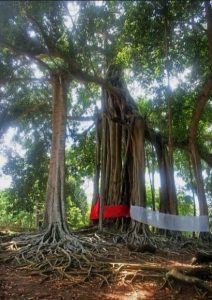 Queen of the Sakalava tribe in 1836 (pictured: the tree we never got to see).
Queen of the Sakalava tribe in 1836 (pictured: the tree we never got to see).
Unfortunately, there were several problems along the way. First of all, the traffic was horrendous. Simply getting through a small town proved to be a nightmare. Stop and go… mostly STOP. And then, we were off onto the backroads on our way to the village; which, still suffering the effects of a recent devastating monsoon, were horrendously muddy. Our minibus did a great deal of slipping & sliding and nearly became stuck on several occasions.
We passed several other minibuses bound for the same location that had turned around because of the condition of the roads… Our driver, however – young & eager – pushed on. Finally, after nearly becoming stuck once again, a representative of Silversea who was accompanying us called a halt. She asked the driver to stop, a vote was taken and, thankfully, an overwhelming majority voted to turn around and return to the ship. The thought of languishing for hours in the wilderness, awaiting the arrival of a rescue vehicle, had not been a pleasant one.
Richards Bay, South Africa: The port areas where cruise ships dock tend to vary greatly. However, as a general rule, 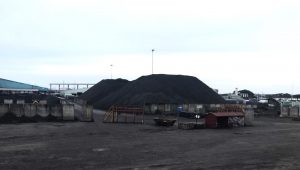 based upon my own personal experience, they are not terribly attractive… and then there’s Richards Bay. I won’t bore you with the gory details. Let me simply say that the port here was significantly less than picturesque, as there were two huge mountains of black coal decorating the landscape, A hefty wind had kicked up, so coal dust was everywhere. So much so that those exiting the ship were required to wear face masks. The scene resembled some eerie apocalyptic wasteland.
based upon my own personal experience, they are not terribly attractive… and then there’s Richards Bay. I won’t bore you with the gory details. Let me simply say that the port here was significantly less than picturesque, as there were two huge mountains of black coal decorating the landscape, A hefty wind had kicked up, so coal dust was everywhere. So much so that those exiting the ship were required to wear face masks. The scene resembled some eerie apocalyptic wasteland.
Given the poisonous atmosphere, we weren’t particularly anxious to hang around on the dock any longer than necessary… The drive to our shore destination – the Saint Lucia Wetlands Park, a UNESCO World 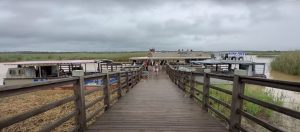 Heritage Site housing hippos and crocodiles – was a little over an hour away and a very pleasant drive through the countryside.
Heritage Site housing hippos and crocodiles – was a little over an hour away and a very pleasant drive through the countryside.
By the way, I’m sure you would enjoy having a look at Travels with V and Steve, a video that is a wonderful introduction to this particular adventure at Hippo Haven – https://www.youtube.com/watch?v=kIziDQvyvRc – and a right-on-the-money synopsis of what we personally experienced and what you can expect should you decide to pay a visit. As the video suggested, several families of hippos were much in evidence… but not a croc in sight.
The ancient Greeks gave the name hippopotamus to this barrel-shaped animal they saw in wilds of Africa. The English language, using the Latin spelling 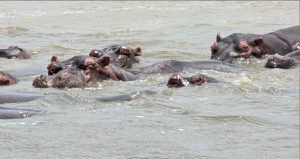 hippopotamus, has kept the name, which is a combination of the Greek words hippos, meaning “horse” and potamos, meaning “river” or “stream.” And “river” is certainly the right name for an animal that spends most of its time in the water and whose eyes, ears, and nostrils are placed so that the it can see, hear, and breathe even if most of its head is underwater (please note photo above).
hippopotamus, has kept the name, which is a combination of the Greek words hippos, meaning “horse” and potamos, meaning “river” or “stream.” And “river” is certainly the right name for an animal that spends most of its time in the water and whose eyes, ears, and nostrils are placed so that the it can see, hear, and breathe even if most of its head is underwater (please note photo above).
Tala Private Game Preserve, Durban, South Africa: After docking in Durban, South Africa, it was an 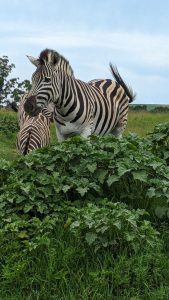 hour+ drive through the ruggedly beautiful countryside before reaching the Tala Private Game Reserve.
hour+ drive through the ruggedly beautiful countryside before reaching the Tala Private Game Reserve.
Once we arrived, we chugged around in a 4 x 4 with an excellent driver/guide who knew precisely where to look for the animals. Hence, we got up-close and personal with a variety of zebras, rhinos, and giraffes, etc. I should add that the rhinos have their horns removed at a very early age to protect them from poachers, who would kill them for their horns… We also spotted a hippo luxuriating in the pond and an ostrich on his merry way.
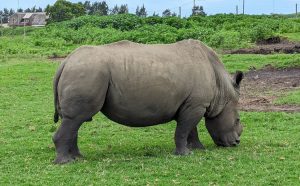 The wonderful thing about this preserve is that there are no lions or leopards here, so the other animals feel perfectly safe and can roam at will. So much so, that they seem to be totally unafraid of humans. In several instances, the animals were so close to our 4 x 4 that we could practically reach out and pet them. An incredible experience.
The wonderful thing about this preserve is that there are no lions or leopards here, so the other animals feel perfectly safe and can roam at will. So much so, that they seem to be totally unafraid of humans. In several instances, the animals were so close to our 4 x 4 that we could practically reach out and pet them. An incredible experience.
Cape Town, South Africa: Draped across a magnificently alluring coastline 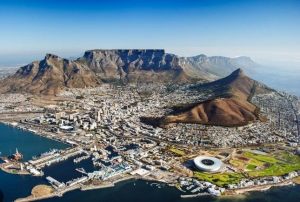 presided over by the Olympus-like grandeur of Table Mountain, there is absolutely no question that Cape Town is one of the world’s most beautiful cities. And, although I’ve visited South Africa’s Mother City on several occasions, its spectacular mountain scenery, relaxed ocean charm, and sense of living history never fail to both arouse awareness and stimulate curiosity.
presided over by the Olympus-like grandeur of Table Mountain, there is absolutely no question that Cape Town is one of the world’s most beautiful cities. And, although I’ve visited South Africa’s Mother City on several occasions, its spectacular mountain scenery, relaxed ocean charm, and sense of living history never fail to both arouse awareness and stimulate curiosity.
On this particular occasion, prior to catching our evening flight home, we had  arranged a full day Cape Town tour through the Guiltedge Travel Group, which we had utilized on previous occasions and had always been more than pleased with the results…
arranged a full day Cape Town tour through the Guiltedge Travel Group, which we had utilized on previous occasions and had always been more than pleased with the results…
… And our current excursion proved to be no exception. After disembarking at 9:15 a.m., we were met by our driver/guide, Samson – an old friend we had specifically requested – who now preferred to be addressed by his given name, Jorum (pictured).
Klein Constantia Wine Estate, Cape Town, South Africa: Described as one of the world’s most beautiful wine 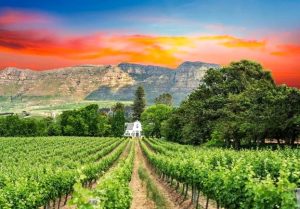 estates, Klein Constantia is situated in the midst of ancient trees and lush greenery in picturesque foothills, offering superb views across the Constantia Valley and False Bay.
estates, Klein Constantia is situated in the midst of ancient trees and lush greenery in picturesque foothills, offering superb views across the Constantia Valley and False Bay.
The history of the estate dates to 1685, when the Dutch East India Company granted a huge tract of land to their commander, Simon van der Stel. By the time of his promotion to governor in 1691, Van der Stel had already planted 10,000 vines, harvesting his first vintage in 1692.
Currently owned by Czech-American investor Zdenêk Bakala, UK businessman Charles Harman, Bordeaux wine personalities Bruno Prats & Hubert Boüard, and vice-chairman Hans Astrom, they are determined to see Klein Constantia live up to its mythical reputation: “We are privileged to be custodians of one of the most historic properties in the Cape and regard the preservation of this heritage as a serious responsibility.”
Interestingly enough, Klein Constantia has had only three winemakers since the farm was revived in the 1980s: Ross Gower, Adam Mason and Matthew 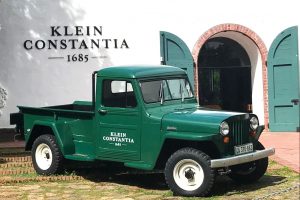 Day. Matthew grew up in Johannesburg; but, because of his interest in winemaking, he relocated to the Cape to pursue an education in this field. After graduating from Stellenbosch University with a bachelor of science degree in viticulture and oenology, his resume included work at various local and international estates, from Meerlust Estate in Stellenbosch to Chateau Belefont-Belcier in St. Emilion, Elderton Estate in the Barossa Valley, and Dancing Hares Estate in the Napa Valley.
Day. Matthew grew up in Johannesburg; but, because of his interest in winemaking, he relocated to the Cape to pursue an education in this field. After graduating from Stellenbosch University with a bachelor of science degree in viticulture and oenology, his resume included work at various local and international estates, from Meerlust Estate in Stellenbosch to Chateau Belefont-Belcier in St. Emilion, Elderton Estate in the Barossa Valley, and Dancing Hares Estate in the Napa Valley.
Returning to South Africa in 2008, under the guidance of Adam Mason, he took on the role of assistant winemaker at Klein Constantia. In 2012, he became the estate’s head winemaker, working closely with viticulturist Craig Harris to produce wines that showcase the estate’s unique terroir.
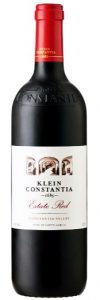 We tasted a number of intriguing wines here, all of which were worthy of consideration. There were, however, several standouts. The Sauvignon Blanc, for example, had its own unique charm. It was bright & light as a feather in the glass, the aromas were scintillatingly subtle, and the palate was… well, yes… brisk & lively with a delightfully citrusy touch. This was, indeed, as the estate noted, “an elevated expression of Sauvignon Blanc.” The Chardonnay was equally up to the mark. Full-bodied and elegantly structured, yet with an enticing backbone of acidity. My favorite of the tasting, however, was the Estate Red. A blend of 69% Cabernet Sauvignon, 28% Malbec, and 3% Petit Verdot, it was deep ruby red in color, bursting with red fruit aromas, and powerful yet elegant on the palate with a long lingering finish.
We tasted a number of intriguing wines here, all of which were worthy of consideration. There were, however, several standouts. The Sauvignon Blanc, for example, had its own unique charm. It was bright & light as a feather in the glass, the aromas were scintillatingly subtle, and the palate was… well, yes… brisk & lively with a delightfully citrusy touch. This was, indeed, as the estate noted, “an elevated expression of Sauvignon Blanc.” The Chardonnay was equally up to the mark. Full-bodied and elegantly structured, yet with an enticing backbone of acidity. My favorite of the tasting, however, was the Estate Red. A blend of 69% Cabernet Sauvignon, 28% Malbec, and 3% Petit Verdot, it was deep ruby red in color, bursting with red fruit aromas, and powerful yet elegant on the palate with a long lingering finish.
All that being said, however, the estate’s claim to fame is its incomparable Vin de Constance, one of the world’s most iconic sweet wines. Just 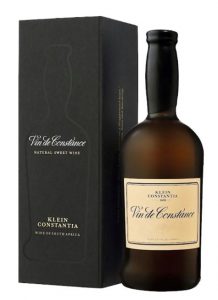 how iconic…? Vin de Constance was requested by Napoleon Bonaparte on his deathbed, having shunned all other sustenance. It was imported by King Louis XVI and Marie Antoinette; and Queen Victoria drank it every night before bed to help her sleep. Need I say more?!
how iconic…? Vin de Constance was requested by Napoleon Bonaparte on his deathbed, having shunned all other sustenance. It was imported by King Louis XVI and Marie Antoinette; and Queen Victoria drank it every night before bed to help her sleep. Need I say more?!
Klein Constantia wines are well worth seeking out. Unfortunately, they are neither available through Pennsylvania State Stores nor Total Wine in Claymont, Delaware (they are, however, available in other Total Wine retail outlets). But the good news is that they may be easily purchased through various sources online, including Cape Ardor Boutique Wines. All are quite reasonably priced, with the exception of the Vin de Constance, which hovers in the $100.00 range.
Bo-Kaap, Cape Town, South Africa: Situated at the foot of Signal Hill, and formerly known as the Malay Quarter, 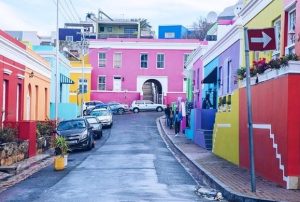 Cape Town’s Bo-Kaap neighborhood is known for its narrow cobblestone streets lined with colorful houses. Its origins date back to the 1760s when numerous huurhuisjes (rental houses) were built and leased to slaves by Dutch colonists. These slaves, who came to be known as Cape Malays, were brought from Malaysia, Indonesia, and various African countries to work in the Cape.
Cape Town’s Bo-Kaap neighborhood is known for its narrow cobblestone streets lined with colorful houses. Its origins date back to the 1760s when numerous huurhuisjes (rental houses) were built and leased to slaves by Dutch colonists. These slaves, who came to be known as Cape Malays, were brought from Malaysia, Indonesia, and various African countries to work in the Cape.
The houses here are a mix of Cape Dutch and Georgian architecture. The choice of color is attributed to the fact that while on lease, all the houses had to be white! When this rule was lifted, and the slaves were allowed to buy the properties, all the houses were painted bright colors by their owners as an expression of their freedom.
Many of the families in the Bo-Kaap have lived here for generations. Today, the community is a significant part of Cape Town’s cultural heritage. And it has 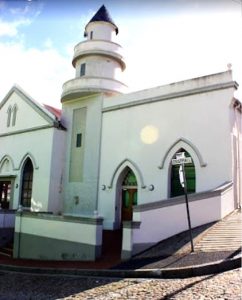 been suggested that the residents here no longer refer to themselves as Cape Malay, but as South African Muslims, as the first established Muslim Mosque in South Africa, the Auwal Mosque (pictured), is also found in Bo-Kaap. And part of the fun of visiting this area of the city is exploring the Islamic kramats (shrines), mosques, food & craft markets, and the fabulous flavors of delectable Cape Malay cookery.
been suggested that the residents here no longer refer to themselves as Cape Malay, but as South African Muslims, as the first established Muslim Mosque in South Africa, the Auwal Mosque (pictured), is also found in Bo-Kaap. And part of the fun of visiting this area of the city is exploring the Islamic kramats (shrines), mosques, food & craft markets, and the fabulous flavors of delectable Cape Malay cookery.
Aubergine Restaurant, Cape Town, South Africa: Following our excursion through Cape Town’s Bo-Kaap 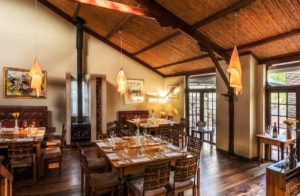 neighborhood, we set out for our lunch reservation at the Aubergine Restaurant. Comfortably ensconced in a transformed 1830s house located in Gardens, one of the oldest parts of the city, reviews consistently rate it among the finest of Cape Town’s fine dining establishments.
neighborhood, we set out for our lunch reservation at the Aubergine Restaurant. Comfortably ensconced in a transformed 1830s house located in Gardens, one of the oldest parts of the city, reviews consistently rate it among the finest of Cape Town’s fine dining establishments.
Indeed, for almost three decades, German-born chef-proprietor Harald  Bresselschmidt has been turning out a mind-boggling, palate-pleasing array of East-meets-West cuisine infused with local ingredients that has kept his loyal clientele oohing and ahhing and has placed him on numerous Top Tens and Readers’ Favorites lists.
Bresselschmidt has been turning out a mind-boggling, palate-pleasing array of East-meets-West cuisine infused with local ingredients that has kept his loyal clientele oohing and ahhing and has placed him on numerous Top Tens and Readers’ Favorites lists.
Fodor’s, for instance, simply gushes all over: “Seafood options are usually excellent, and meat dishes like an ostrich fillet with sweetbread and marrow dumplings richly subline.”
… Frommer followed suit with three big stars: “Gourmands form an orderly queue… He’s a chef schooled in the classics (East and West), yet his love of innovation is compulsive; some call him avant-garde (how about springbok medallions with foie gras?), but he also takes great care with the most simple-sounding dishes such as his signature aubergine soufflé or slow-roasted wild boar.”
So as not to be outdone, Cape Town Magazine proceeded to canonize Aubergine as something of a city icon, going absolutely gaga over the restaurant’s homespun elegant décor and contemporary fine art paintings, before even uttering a hint with regard to the quality of the cuisine.
Once you check out the social media, however, the picture changes somewhat… Oh, there are the usual canned upbeat epithets, but… there are also just 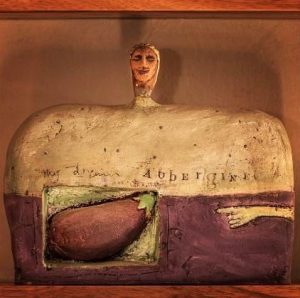 enough dissenting opinions to give one pause. Then couple this with a rather interesting review by Daisy Jones in winemag.co.za: “Despite the plaudits, despite the showcasing of local ingredients, our food was generally ordinary, and in the case of my main course, downright awful.”
enough dissenting opinions to give one pause. Then couple this with a rather interesting review by Daisy Jones in winemag.co.za: “Despite the plaudits, despite the showcasing of local ingredients, our food was generally ordinary, and in the case of my main course, downright awful.”
And while I wouldn’t go so far as to call the food “awful,” the entire experience here was significantly less than memorable. I have visited (and reviewed) quite a number of restaurants in the Cape Town area; and I can truthfully say that Aubergine rates near the bottom of the barrel… However, I will be posting a complete critique of this restaurant in the very near future.
Bon Appétit & Cheers!
TAD
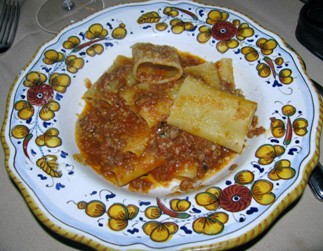
{ 0 comments… add one now }